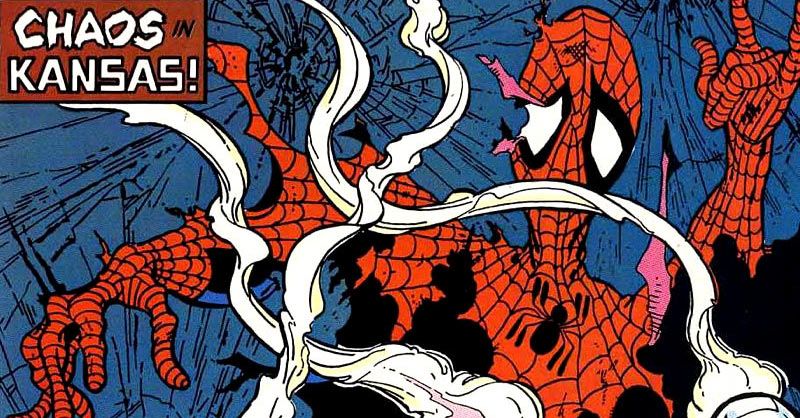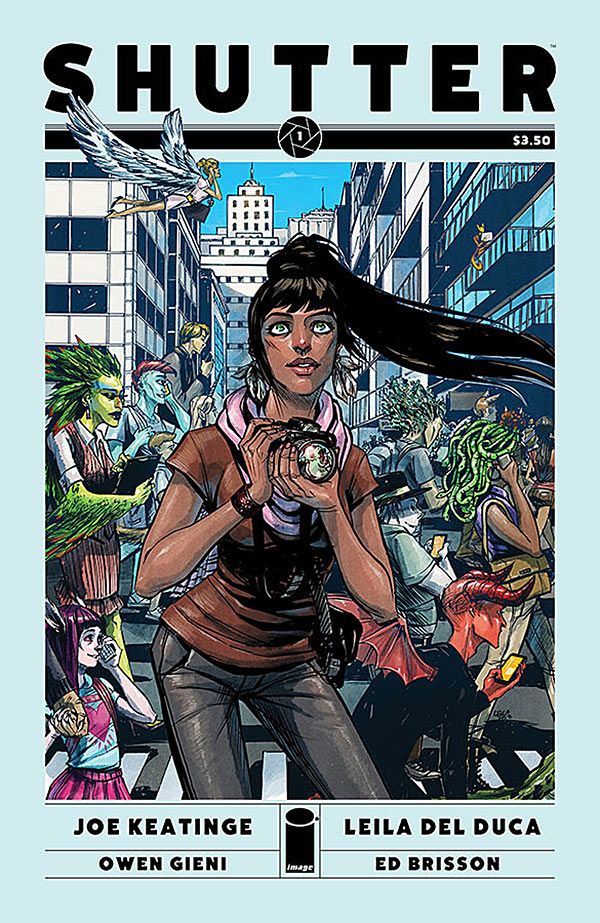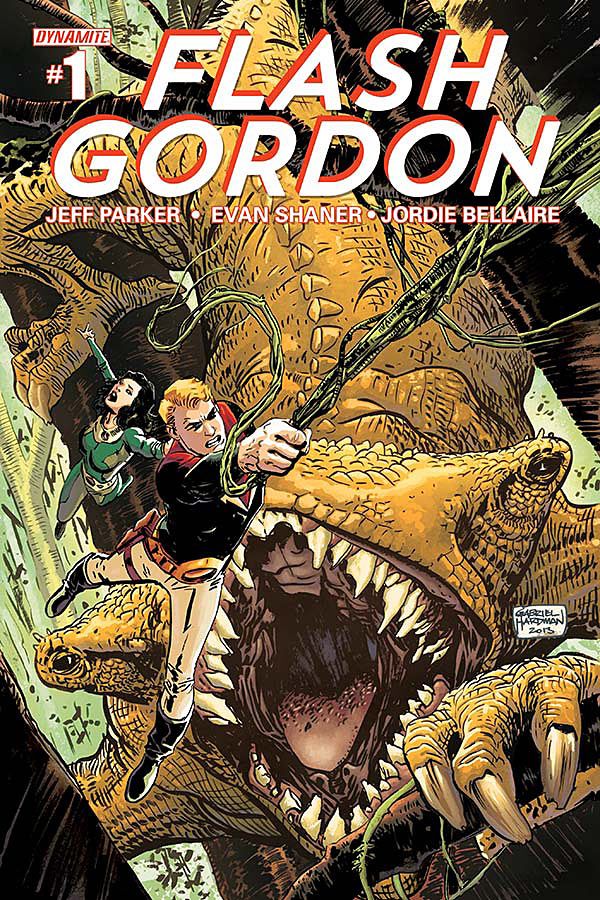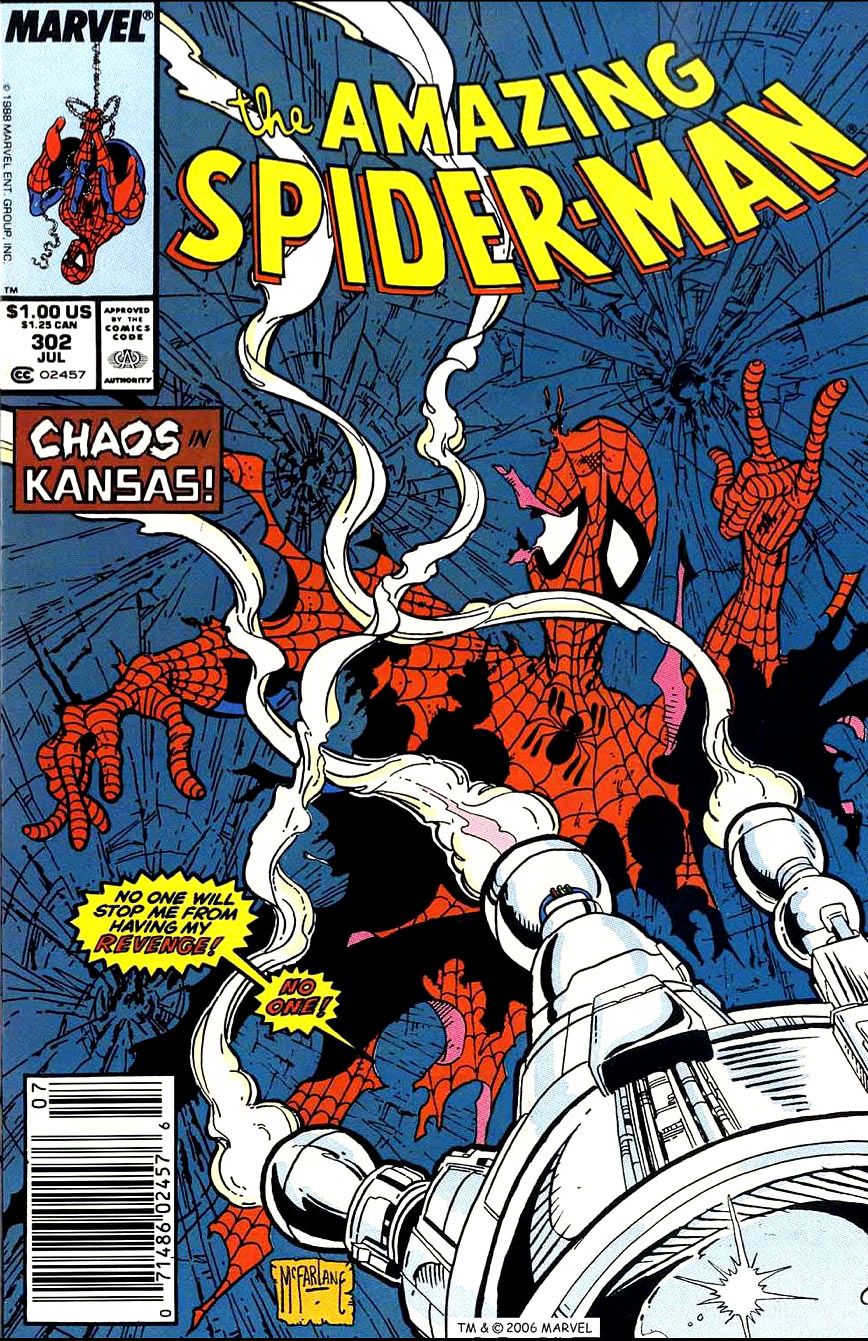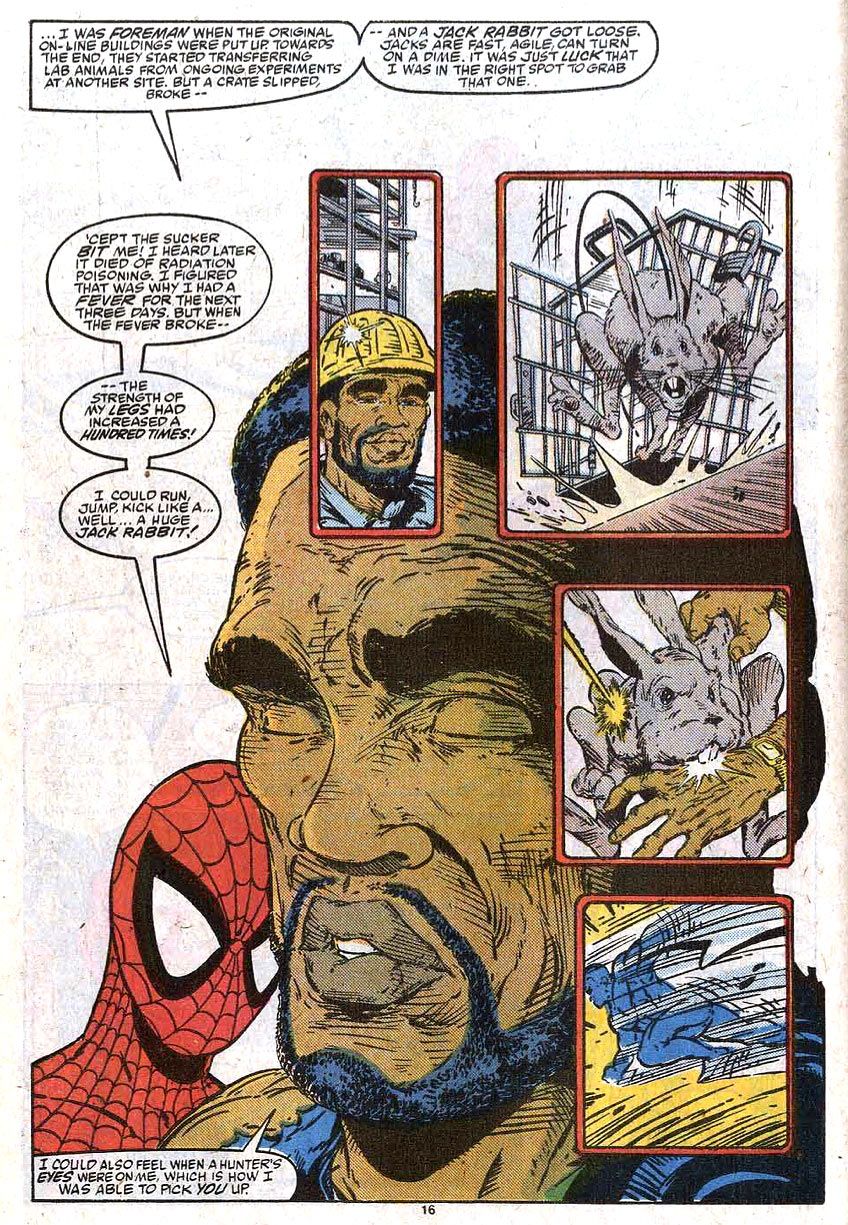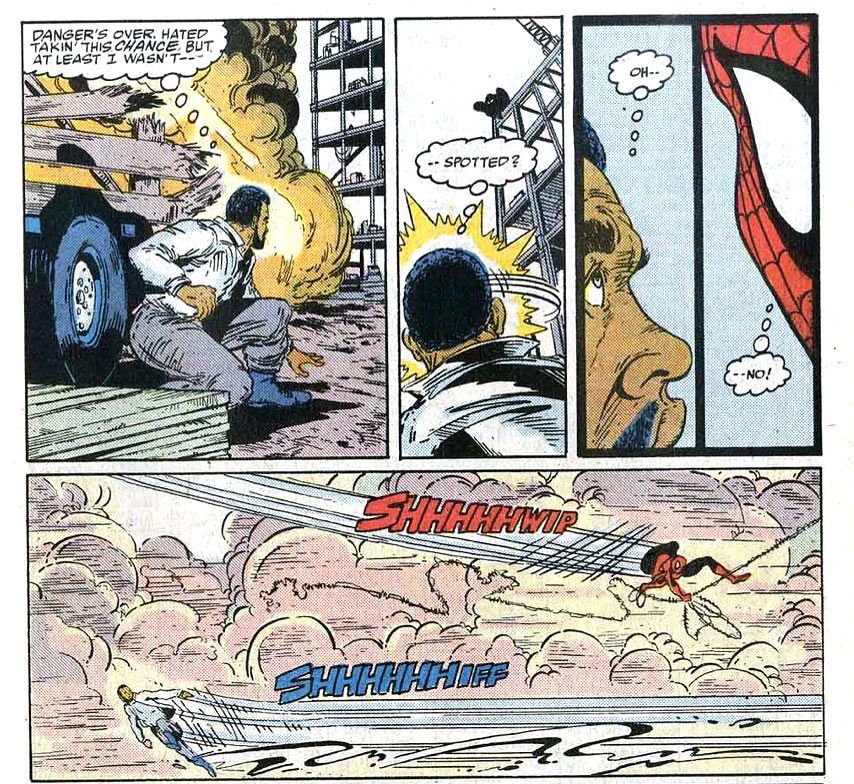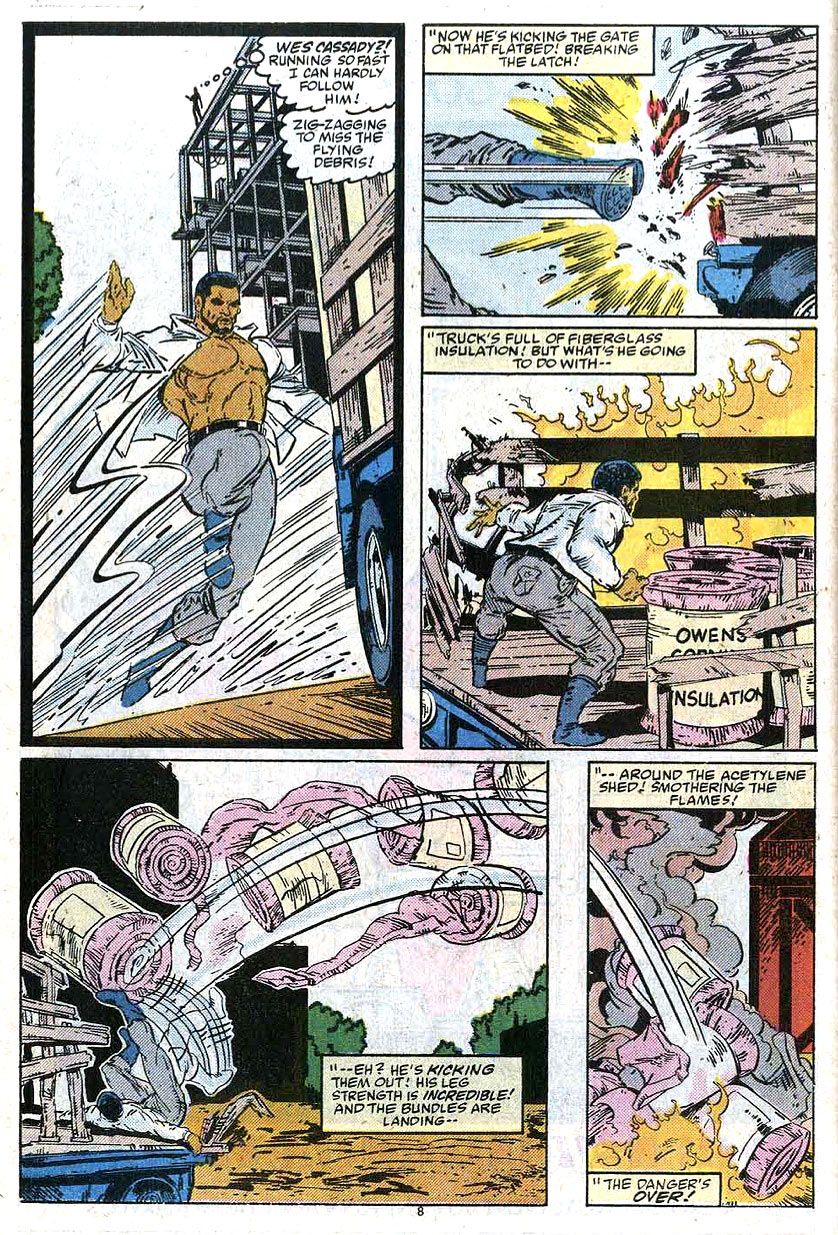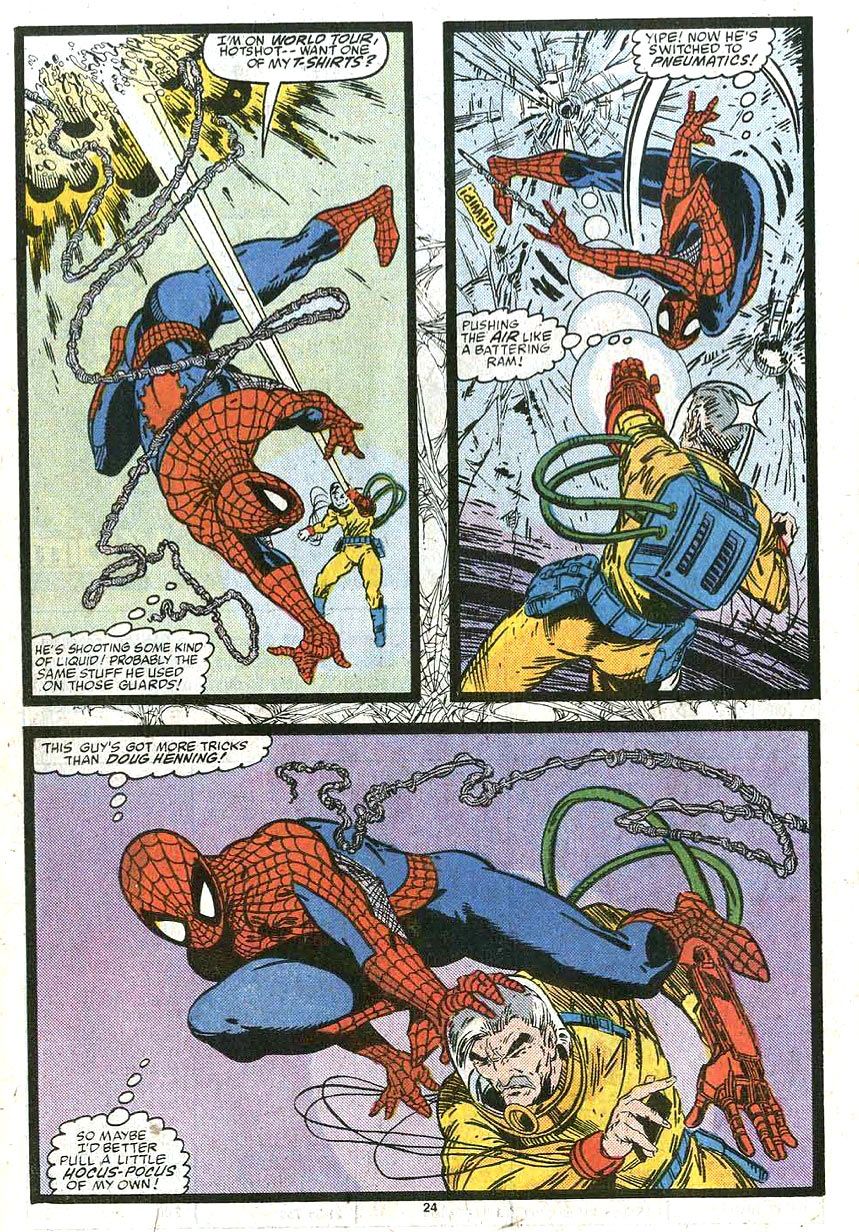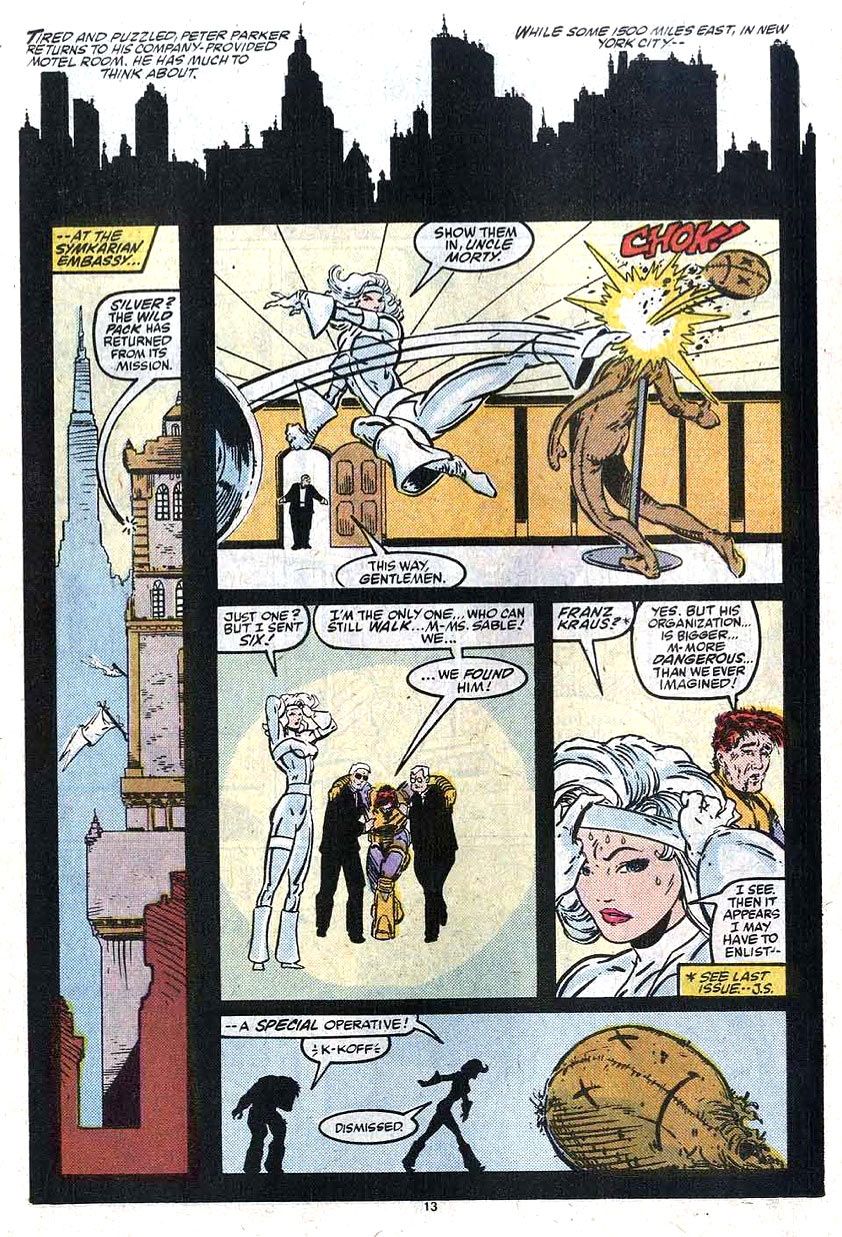THREE BOOKS TO LOOK OUT FOR THIS WEEK
"Shutter" #1
Joe Keatinge's new series, "Shutter" #1, hits store shelves this week. It is a great tease for the series. It doesn't tell a complete story in the first issue, but it does provide enough of an "origin story" for series protagonist Kate Kristopher to pique my interest. Kristopher has inherited the family mantle of adventurer, but she's effectively retired from it at a young age. Some hints and teases are thrown around to give you the idea that there's a lot more story we need to find out, but Kristopher's personality and strengths are enough to bring you back for more. She's not a heroic figure at this point; she's an interesting one.
Artist Leila Del Duca is a find. She does it all in this issue, and I don't have a complaint about any of it. Not the monsters, not the cityscape, not the design of the main character, or the sharp sense of humor her art adds to the book. The opening two-page spread of a younger Kate bounding on the moon is ridiculously cute and engrossing. The latter double page spread looking into the cityscape is awesome and slightly surreal.
Credit also has to go to Keatinge's "Glory" cohort, Owen Gieni, whose colors are anything but standard fare for modern comics. He evokes watercolors and gritty textures and shadows with this work. The textures are subdued and well-placed, and everything gives the book an extra sense of atmosphere that the usual Photoshop glossy color job would overlook.
Bonus credit, on top of all this, to Tim Leong and Monica Garcia, who are credited with the book's design. The cover layout is awesome, and the way the credits are handled works well, too. (Credit to Ed Brisson for any of that which might be his work, but also for his sound effects lettering and variations in dialogue size.)
"Invincible" #110
This will be a good test to see how many people are still reading "Invincible," how many are reading it in trades only, and how many claim to be reading it but haven't looked at an issue in a very long time. Because what Robert Kirkman and Ryan Ottley pull off in the second half of this issue is the kind of controversial thing that could split the internet in half, along both storytelling and socio-political lines. I am fascinated by what the reactions to this issue might be.
"Flash Gordon" #1
An easy front-runner candidate for best first issue of the year, "Flash Gordon" #1 is the kind of clean, adventurous, and imaginative comic book that we all want to see more of. Jeff Parker and Evan Shaner combine to introduce us to a new Flash Gordon in a way that instantly defines the adventurous and overly-confident nature of the character while still dropping us into the middle of a sci-fi story that is easy to get into without being confusing. The tech isn't important; it's the action and adventure. It's the excitement of the new, the strength of well-defined characters, and the gorgeous art on every page. This book is a winner.
Flash Gordon is introduced to us, first, in the past with an incident that shows his free-wheeling adventurous side. Then we move up to the "current day," in which we see him locked in an aerial chase against Ming the Merciless' planes. Thanks to a series of wormholes/boom tubes/jumpgates, Gordon is able to pilot in and out of a series of planets, letting us see glimpses of tree worlds, water worlds, snow worlds, squid worlds, the works. When the flight finally ends on another presumably single climate planet, a little extra exploring introduces us to the people and animals of the world. With one last character twist at the end, this issue provides something of interest on every page, all of it beautifully rendered by Shaner and colorist Jordie Bellaire, who keeps the book bright and clean.
If you've skipped past most of Dynamite's pulp hero books, break that for this one. It's a cut above the rest.
C'EST FINI
The auction of mostly Franco-Belgian original art I wrote about a couple weeks ago happened in Paris over the weekend. All told, it brought in over $5.3 million.
The Francois Schuiten page I showed off in the column came in just over $25,000. If you read the column early, go back to it and see the updated version of that page, where I had the high def version of it. It's spectacular.
That Herge "TinTin" rough page reached $397,015, nearly double the expected price. The Uderzo "Asterix" page went for nearly $200,000, just over the expected $150,000 - $165,000.
The double-page full color spread from "Orbital" by Serge Pelle brought in a reasonable $16,285, about 50% over the top expected price.
All of this puts your CGC 10 copy of "The Walking Dead" #1 to shame.
AMAZING SPIDER-MAN #302: "(Mid) American Gothic"
This issue answers the inevitable question of what would happen if a man gained the proportionate strength of the radioactive jack rabbit who bit him? Also, Peter Parker considers a longer commute to work.
From the start of the "Amazing Spider-Man Omnibus," David Michelinie has returned to the idea that the common man, Peter Parker, has married a superstar model in Mary Jane, and has stresses about it. It's not a misogynistic thing or a sign of the times. It's just human nature that the disparity of incomes in this new marriage leads to the one on the "short end" of the stick to have doubts about his contributions to the marriage. When the partner brings home so much of the bacon, one might feel guilty eating such crispy salty goodness. (Pushing the metaphor too far? Yeah, sorry. Didn't mean to ham it up.)
In previous issues, we've seen Peter be unacceptably risky in his dealings with a villain in order to get a better photograph and more money. That mistake nearly cost someone their life. Mary Jane has sensed his frustrations and suggested a new professional angle on his photography. He even considered going back to school to sharpen his skills.
But, now, he has a new job offer on the table, appealing to his scientific side. It's with an outfit named "On-Line Research," a generic research lab for scientific studies that fits a perfect little mold in the world of comic books. (Its name is not as confusing as you might think, given that the book pre-dates Netscape.) It's generic enough to encompass just about anything, and provides lots of angles for the imaginative writer to fill out stories. While that helps set up the action of the issue, the real drama with this issue is at the end, when Peter gets excited about the job and wants to take it. Did I mention that the job is in Kansas? And that Mary Jane doesn't want to leave New York?
There's your tension. I can't wait to see how it plays out next issue. I remember enough that he doesn't take the job -- or at least doesn't last long -- but I'm drawing a blank on the details.
This is a plot point that helps bring new drama to the new marriage while building up on the themes of previous issues. The characters have been forced in two different directions for very logical reasons, and now that looks to be hitting a breaking point. Someone will lose on this one. That's exciting from a reader's point of view, even if the execution is very surface level and happening in support of some costumed villain of the month story.
In this issue, the villain is a rogue scientist looking to use his research to create a weapon and get his revenge on past professional wrongs. He's secondary to the story, though. The real star of this story is Wes Cassady, the construction foreman at On-Line Research's new building. He's the one with mysterious super speed powers with a powerful kick. When Spider-Man confronts him, he shares his origin story.
First: What a relief to have a different kind of story, one where the guy with powers doesn't want to hide or fight the guy who's there to potentially help him. He's relieved to have someone to listen to him. It's just... nice. Cassady seems like a nice guy -- a natural leader of men, a family man, someone who has to hide something that's hurting him inside. And Spider-Man gives him the chance to vent, to spill the beans, and to use his power for good.
Well, almost. The big moment in the story comes at the end, where Spider-Man asks Cassady for help, but Cassady doesn't do it for fear of revealing himself. Spider-Man manages find without the help in the end (which is a bit of a cheat), and then walks away.
The problem with this story is that Spider-Man comes off as cold and useless. He listens to Cassady, but never shares with him his very similar experience. Spider-Man listens to him, tells him there's nothing he can do to help, and swings away just happy that Cassady never asked him what he was doing in Kansas. And when Cassady passes on his big moment on the end, Spider-Man gives him a two line lecture and walks away. We never will know what became of Cassady.
So, what's the point of the story? Cassady doesn't change anything. He doesn't have any change of heart. He is forced to make a decision at the end, but the results of it will forever be unknown. There are no consequences shown to the viewer, aside from a minor guilt trip.
In the end, he's a guy who was bitten by a radioactive jackrabbit and gained strong kicking skills. Maybe the less we know about him, the better. But I think he's one of the more interesting and unique characters in the series so far. A bit mopey and depressed, but a character who could be changed greatly by his own actions or in-actions. We just never see the results. Frustrating.
Curiously, he's never been seen again. He's the kind of character I'd expect Dan Slott to bring back. Hey, if Squirrel Girl and Slapstick could come back, why not "Bunny Man," as he's nicknamed on Marvel's Wiki?
McFarlane's art in this issue is stronger than last issue's. He's got a better and more consistent handle on the faces he's drawing repeatedly here. Spider-Man is getting more acrobatic again in his aerials. The inking looks busier. The little details like the webbing in the gutters are starting to show up. That said, McFarlane is still feeling his way around Spider-Man's costume. The webbing pattern is competent, but not stylistic, and the inking in the blue areas is much more simplified than it would later get. It's not a bad look, but it seems like more of a throwback than anything else.
The weakest page of the issue by far is the tenth. It's a page with Silver Sable training in the Symkarian Embassy. The page looks like it was churned out in an hour. It sticks out like a sore thumb in the issue, like someone miscounted the pages and had to throw this in at the last minute to keep the page count up. There's basically no backgrounds, no thin lines in the inks, and a layout that's boring.
So while McFarlane is getting stronger on the series as the months fly by, he's still inconsistent. (There's a Sandman head also in the issue that's way out of proportion, and lumpy.) We haven't yet seen the full McSpidey, yet.
From a Different Era: Cassady wears a prominent Elmer Fudd shirt in the issue. Warner Bros bought DC Comics more than 20 years earlier. I wonder if there was a reason McFarlane chose that t-shirt. I can't imagine Disney's lawyers or marketing department ever letting that one slip by today.
Next week: More Silver Sable, more Nazis, Sandman, and Mary Jane in her unmentionables, again.
IF YOU WATCH ONLY ONE INTERVIEW THIS YEAR...
Let it be Jonah Weiland's chat with Evan Dorkin. I was in this room at the New York Comic-Con last year when this was recorded. You can hear me laugh in a couple of spots, just off camera to the left. I hope the hilarity translates well across the video. I think it does. Dorkin takes no prisoners here.
Fair warning: This is not a family friendly interview. It has more curse words per minute than likely anything else we've ever published here at CBR. It's worth it, but let the viewer be advised!
Twitter || E-mail || Instagram || Pipeline Message Board || VariousandSundry.com || AugieShoots.com || Original Art Collection || Google+
d

